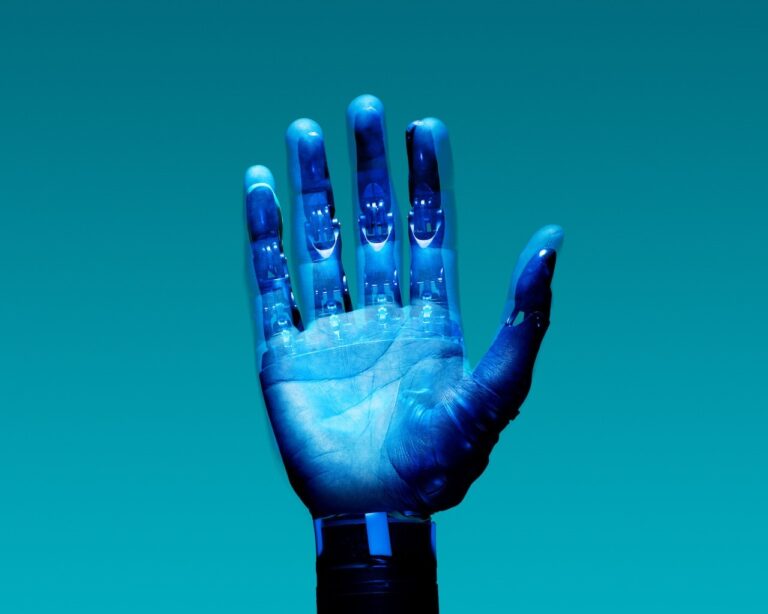The day when robots will assist us even in our daily life activities is here. Humanoid robots are revolutionizing industries and reshaping our perceptions of what is possible.
From science fiction dreams to remarkable realities, humanoid robots have emerged as incredible technological marvels. But what are the top 7 humanoid robots used today?
Table of Contents
1. Atlas
Manufactured by Boston Dynamics in 2013, the bipedal humanoid robot Atlas was actually developed to aid emergency situations in search and rescue operations. It’s six feet tall and weighs around 330 pounds. Despite its weight, it comes with extraordinary motor skill capabilities, such as twenty-eight degrees of freedom in its limbs.
Besides, it also has advanced control systems and two vision systems, using which can easily prove fruitful during disasters, such as a Fukushima-like nuclear disaster. From harsh weather to tough-to-reach destinations, Atlas will surely prove to be an asset in situations or places where humans can’t navigate.
2. Ameca
Also known to be the world’s most advanced and realistic robot, Ameca’s facial expressions are human-like, which makes it perfect for fostering human-to-robot connections. Developed by Engineered Arts, it’s believed to serve as a platform for further advancements in humanoid robots.
Besides its genderless appearance, it also has grey rubber skin. It is equipped with binocular eye-mounted cameras, facial recognition software, embedded microphones, and a chest camera.
This humanoid robot will find applications as customer service and educational tools. Moreover, it may also be used in research and development and in entertainment to foster human-like connections in a digital environment.
Read more: The invasion of robot waiters: is this the future of restaurants or a passing trend?
3. ASIMO
Manufactured by Honda in 2000, ASIMO (Advanced Step in Innovative Mobility) was developed as a helper to the people. Named after Isaac Asimov, this remote-controlled humanoid robot has advanced features such as its ability to recognize and detect moving objects, gestures, and postures in its environment.
ASIMO is capable enough to sense human presence and movements in its vicinity. It had come up with several developed versions over the years until 2018 when Honda declared the cease in its further development. In 2004, ASIMO, the first robot to exhibit genuine human-like mobility, was inducted into Carnegie Mellon’s Robot Hall of Fame.
4. Astro
Astro is Amazon’s AI-driven household robot which is designed to serve primarily as a home security device. This comprehensive household companion is designed sophisticatedly with the latest advancements in popular technologies.
It comes equipped with a periscope, smart speaker, and security cameras, which makes it capable of navigating around the house or following your commands with ease. It’s voice-controllable and can even distinguish between a house’s residents and outsiders. However, its movement is restricted to open and flat spaces, which is why it can’t climb stairs.
5. Pepper
Manufactured by SoftBank Robotics, Pepper is a semi-humanoid robot that can understand people’s emotions. It recognizes and understands people’s emotions by analyzing their voice tones and facial expressions.
Pepper is equipped with one 3D camera, two RGB cameras, six laser sensors, two ultrasound transmitters and receivers, some collision-avoidance sensors, and three obstacle detectors. This versatile robot was designed primarily for human-robot interaction research.
However, it has also found many other applications. It has been used as a receptionist in various places such as hospitals and banks. Besides, it also served as a cheerleader and consumer and has even been used for educational purposes.
6. Beomni
Beomni, the humanoid robot developed by Beyond Imagination, stands at the forefront of technological innovation. Powered by an evolving AI brain, it possesses the ability to learn and improve over time, eventually achieving semi-autonomy and full autonomy.
With a friendly face, two arms, and a chest display reminiscent of Iron Man, Beomni moves gracefully on wheels. Its mobility, coupled with the capability for remote operation, enables it to work safely alongside humans, reacting to changes in real time and utilizing haptic feedback sensors for delicate tasks.
In the medical field, Beomni’s applications range from elder care and telemedicine to quality control, dangerous work, and even physical therapy. Truly, Beomni represents the cutting edge of human-robot collaboration.
7. Digit
Digit, the humanoid robot by Agility Robotics, stands at five feet, nine inches tall, and possesses a dynamic movement capability, allowing it to navigate complex environments. With its nimble limbs and sensor-packed torso, Digit is adept at tasks like package delivery.
Unlike traditional robots, Digit walks on two legs, mimicking human movement and taking up the same space. Its redesigned head features animated LED “eyes,” and its hands have been improved for human-robot interaction. Marketed for logistics, industrial inspection, and telepresence, Digit aims to enhance productivity alongside humans.
While its current abilities are limited, Digit’s main function is lifting and placing objects up to 35 pounds. Agility Robotics, headquartered in Corvallis, Oregon, envisions Digit as a reliable robot partner that complements the human workforce, and it recently showcased the latest version at Promat 2023 in Chicago.
These were the top 7 humanoid robots that are used today. However, it’s just the beginning of the transformation. Humanoid robots are slowly crawling into other parts of our life, thus making our tasks easier and hassle-free.
Read more: Musk presents Optimus, the first humanoid robot: what it will do and how much it will cost












